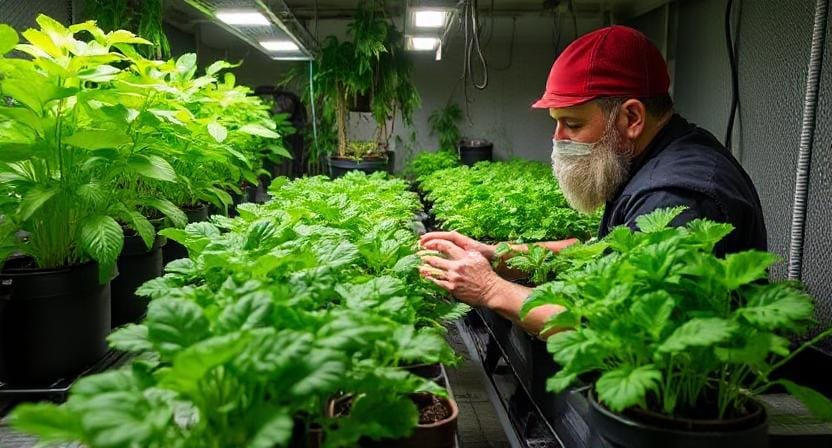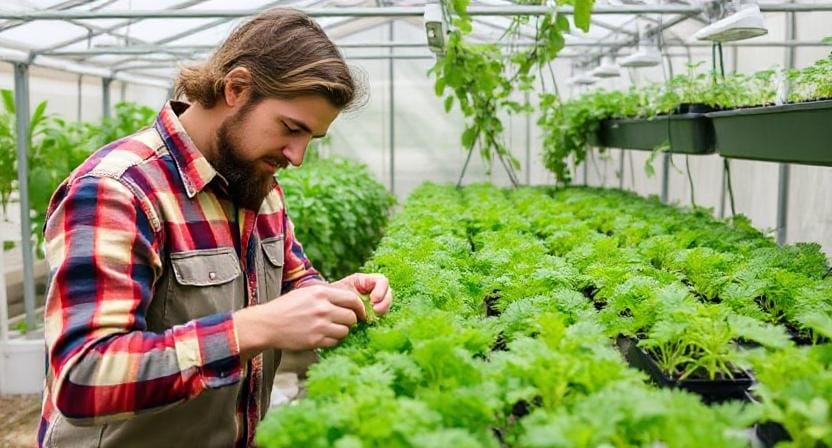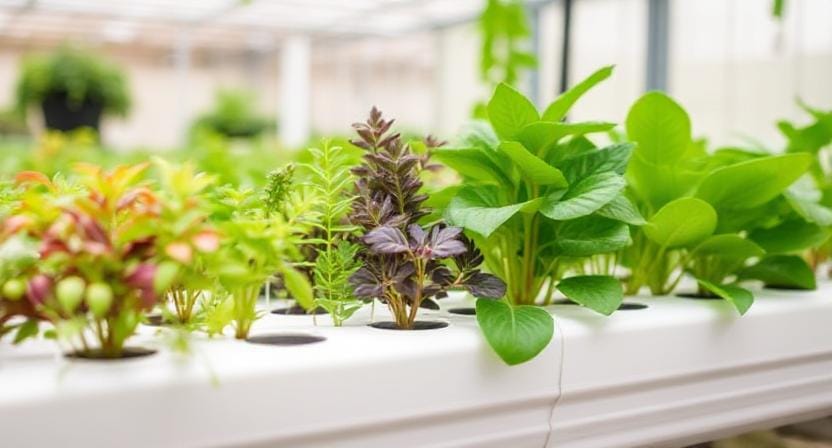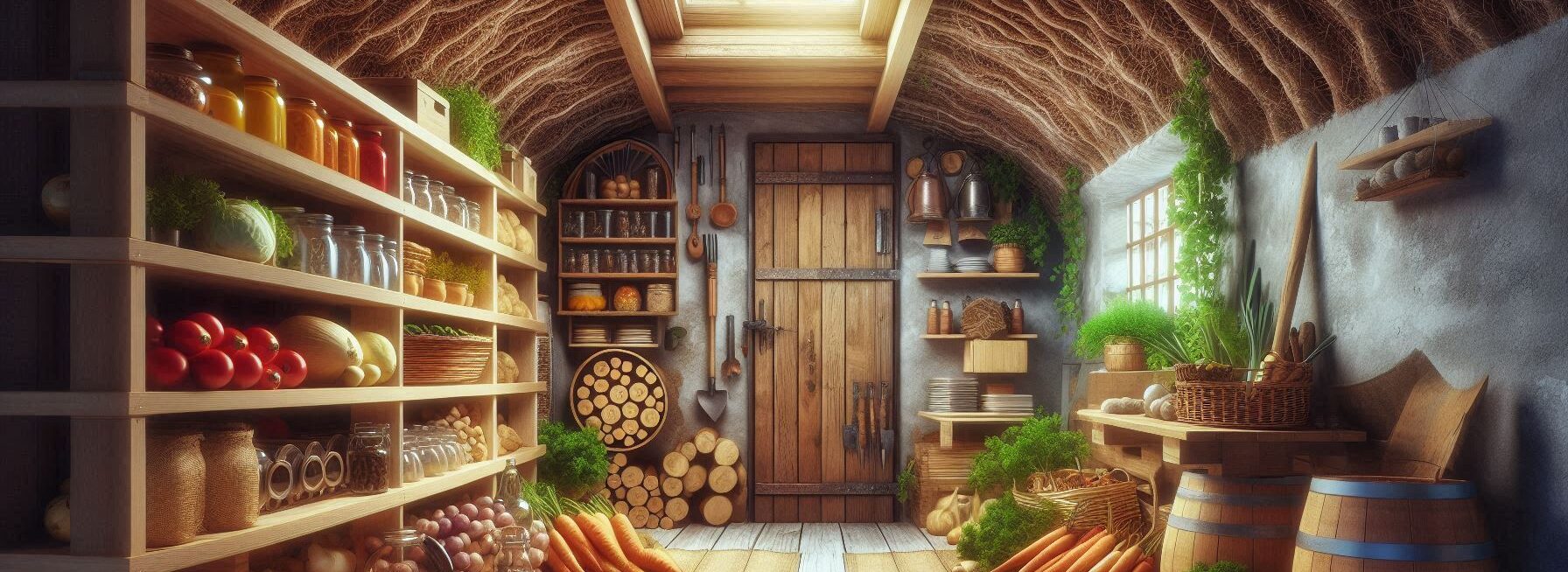Please Note: This post may contain affiliate links. If you click one of them, we may receive a commission at no extra cost to you. As an Amazon Associate, I earn from qualifying purchases.
Last Updated on November 1, 2025 by Kevin Collier

Top Takeaways and Key Concepts
Set up your growing area with adequate light, water, nutrients, and aeration.
Choose plants that thrive in hydroponics like greens and herbs for consistent yields.
Build your system using food-safe containers, secure plumbing, and easy-to-clean design.
Monitor and maintain water pH (around 5.5-6.5) plus nutrient levels every week.
Plan for regular cleaning and maintenance to sustain year-round production.
So, you're going to learn about the amazing world of hydroponics! Isn't it fun? You might be wondering, “What is that?” It's not a new yoga class or a fancy cup of coffee. Nope! It's all about growing plants without dirt.
Yes, there is no dirt at all! Just plants, water, and some special nutrients that help them grow. Isn't that neat? You may have fresh vegetables whenever you want, even when it's chilly outside and your garden appears forlorn and barren.
You can produce lettuce, tomatoes, and even herbs right in your home with hydroponics. No weeding and no big sacks of dirt. Just watch your plants develop! If you don't have a lot of room, you can even use trays or bottles.
It's sort of like magic. As your plants search for the light, you'll feel like a little gardener. You may have your own fresh salad without having to go outside. That's rather cool, isn't it?
It could be hard to get started, but it's worth it. Just think of how great it will be to pluck a tomato you cultivated yourself. So, are you ready to get your hands (sort of) filthy on this new adventure? Let's do it!
Understanding Hydroponics: The Basics

First, let's look at the science behind this method of farming without soil. Hydroponics uses water solutions that are full of nutrients to feed plants directly through their roots. Picture your plants eating like they're at an all-you-can-eat buffet where everything is made specifically for them!
There are several kinds of hydroponic systems. Some of them sound like they belong in a sci-fi movie, like deep water culture, nutrient film technology (NFT), and aeroponics.
*** Shop for Survival Gear - Tools - Kits ***
Survival Gear - Bags and Backpacks - Knives - Boots/Footwear - Communication
Outdoor Cooking - Gloves - Hydration - Dry Boxes - Water Filtration Systems
Tents - Sleeping Bags - First Aid Kits - Multi-Tools - Flashlights - Fire Starters
Navigation - Survival Food - Night Vision - Headlamps - Stun Guns - Binoculars
Each approach has its own pros and cons. For example, deep water culture uses Styrofoam to hold up plants while their roots hang down into oxygenated water below. It's like yoga for plants: you relax a lot without doing much.
You might be wondering how much room you need for this project now. It's interesting that hydroponic systems may fit in small spaces like balconies or basements! No matter how big or little your home is, there is always place for some green deliciousness.
Picking Your Hydroponic Setup

Okay then! We are now convinced that we can produce our food without soil. Next, we need to figure out which configuration works best for us. I think it's important to start with the basics, especially if you don't want to be the next crazy scientist in your garden.
The Kratky method is probably the easiest choice. It's a passive system where plants rest in pots full of fertilizer solution without needing pumps or energy. Put water and nutrients in your container and let nature take care of the rest (but keep an eye out for algae growth).
If you want to amaze your friends at barbecues (or at least make them jealous), on the other hand, you might choose to create a more complicated system like NFT or aeroponics. These need pumps and timers, but they let plants grow quicker because oxygen gets to their roots more easily. Who doesn't want really good vegetables?
Also, be sure that the materials you choose for your setup, including containers and tubing, are safe for food. No one wants chemicals to go into their lettuce! Believe me, no one will like your “special” salad dressing concocted from unknown plastic flavors.
Choosing Plants for Your Hydroponic Garden

Now that your system is all up and ready to go (without blowing up), it's time to pick the tasty crops you want to cultivate! Not many plants do well under hydroponics, but leafy greens like lettuce and spinach practically urge you to grow them this way.
Herbs are also great choices because they don't take up much space and provide flavor to almost any dish. Basil? Yes! Cilantro? Check again! You may become the neighborhood herb expert in no time at all. But keep in mind that some herbs like varying amounts of light, so don't just plant them anywhere!
If you're feeling brave (and maybe a little crazy), you might even try growing tomatoes or peppers. Just remember that these plants need support as they grow tall and heavy, like teens who won't clean their dorms.
A lot of gardeners also have luck growing strawberries in hydroponics, which is interesting. Imagine picking fresh berries from your indoor garden while still in your pajamas. It doesn't get much better than that!
Taking Care of Your Hydroponic System

Now that you've planted everything perfectly (and hopefully not drowned any poor seedlings), let's talk about how to take care of your plants. Nothing crushes dreams faster than forgetting about those little green wonders.
Plants do best in certain pH ranges, so it's important to check them regularly. If you don't, they can start acting like cranky teens who refuse to eat after 7 PM. In general, try to keep the pH levels between 5.5 and 6.5. This will make everyone pleased!
You should also keep a close eye on the levels of nutrients in the water because plants are always looking for food in their watery habitats. Adding fertilizers every few weeks helps keep plants from getting sick, which can make their leaves droop regretfully toward their fate.
That reminds me… Pests can get into gardens that don't have any soil! Watch out for aphids or spider mites that try to crash the party without being invited. Ladybugs and other helpful insects are fantastic pest control buddies!
Getting Your Bounty
Finally, the time we've all been waiting for: time to harvest! It's time to enjoy the fruits of your labor after taking care of those beautiful greens through thick and thin (hopefully without serious problems along the way).
To get leafy greens like lettuce or spinach, just cut off the outer leaves and leave the inner ones alone. This will help them come back quickly. You won't have to plant anything new every week to have salads all summer long!
For herbs? Just cut off the sprigs as needed. Regular pruning makes them bushier, which makes them look great and smell great, even if they smell a lot like pizza sauce when you cook them.
And don't forget about fruits! Wait until tomatoes, pumpkins, and other fruits are fully ripe before plucking them. That's when they taste the best, and they will make every meal a gourmet masterpiece worthy for royalty. By “royal standards,” I mean all that happens at my dining table after long days of taking care of my crops!
Frequently Asked Questions
Can hydroponics grow food all year?
Yes. With controlled lighting, water, and nutrients, hydroponics can produce food indoors year-round regardless of outdoor weather.
Which plants work best in hydroponic systems?
Leafy greens and herbs thrive most consistently, while larger crops like tomatoes and peppers may require support structures.
Does hydroponics require a lot of space?
No. Hydroponics can be scaled small using shelves, trays, or compact containers in rooms, balconies, or basements.
How often should I check nutrient and pH levels?
Weekly monitoring is recommended to keep pH near 5.5–6.5 and to maintain nutrient strength for healthy plant growth.
Are pumps always required for hydroponics?
No. Passive methods like the Kratky system can work without pumps, but active systems improve oxygenation and growth speed.
Do hydroponic crops still attract pests?
Yes. Soil isn’t required for pests to appear, so regular inspection for aphids and mites is still important.
Is cleaning important for long-term hydroponics success?
Yes. Regular cleaning prevents algae growth, clogging, contamination, and nutrient imbalances that weaken yields over time.
Suggested External Resources:
How To Build a Simple Hydroponics System
https://www.hydroponics.com/how-to-build-a-simple-hydroponics-system
Hydroponics Gardening Guide
https://www.gardeningknowhow.com/edible/vegetables/hydroponic-gardening.htm
A Beginner's Guide to Growing Herbs Indoors
https://www.thespruce.com/growing-herbs-indoors-1402948

Kevin Collier is a seasoned survivalist and expert in prepping and homesteading, contributing to WiseSurvive.com. With a deep-rooted passion for self-sufficiency and outdoor survival skills, Kevin shares practical advice, strategies, and resources to help individuals prepare for any challenge. His informative articles cover a range of topics, from essential survival techniques to sustainable living practices, empowering readers to thrive in any situation. Whether you're a novice or a seasoned prepper, Kevin's insights will inspire you to take charge of your readiness and build resilience for the future.




